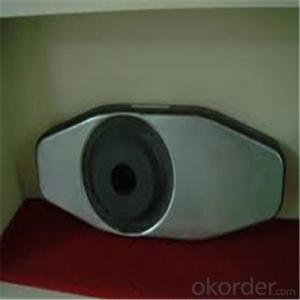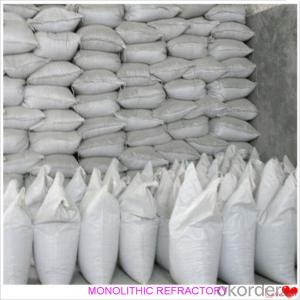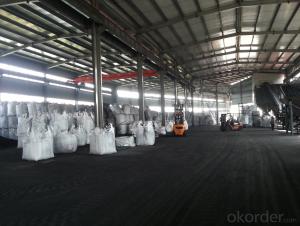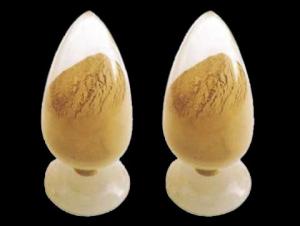Monolithic Refractories for Iron and Steel Industry - Calcined Petroleum Coke with Stable Quality
- Loading Port:
- Shekou
- Payment Terms:
- TT OR LC
- Min Order Qty:
- 20 m.t
- Supply Capability:
- 1000 m.t/month
OKorder Service Pledge
OKorder Financial Service
You Might Also Like
Factory Background
The factory is majorly running and operating carbon additive (pitch coke, calcined petroleum coke and anthracite), low nitrogen carbon additive, and brake pad making material. Company is the long term supplier of Sinosteel Corporation, Shanghai Carbon Corporation, the plant of SGL Group the Carbon Company in China and some largest special carbon products producing plants.
YUAI also supplies huge amout of high quality carbon additive and graphite carbon additive to steel plants, foundries and ferrotungsten plants. YUAI has been assigned by BAO STEEL as the only organization for processing pitch coke for export purpose. The group’s major products are constantly exported to Japan, Korea, Malaysia, South East Asia countries, Europe and America, which receive praises by our consumers.
The group has invested numbers of calcinators in Anhui China to ensure the capability of producing and processing huge amount of carbon additive. Further investment is on process. According to the orders from customers, YUAI is able to processing and providing different specifications of carbon additive and other products. To provide best quality of products and to offer customers most satisfied service is YUAI’s operating objectives.
Calcined Petroleum Coke
FC:98.5%min,
S:0.5%max
A:0.8%max
V:0.7%max
Mositure:0.5%max
Size:1-5mm
This product is mainly used in steel-making and foundry. Calcined Petroleum Coke
Calcined Petroleum Coke comes from delayed coke which extracted from oil refinery. Although Calcined Petroleum Coke contains a little bit higher level of sulfur and nitrogen than pitch coke, the price advantage still makes it widely used during steel-making and founding as a kind of carbon additive/carburant.
Packaging & Delivery
Packaging Detail:25kg paper bag into 1t weaving bag 5kg, 10kg and 20kg weaving bag into 1t weaving bag 25kg weaving bag put on pallet covered with entanglement wrap product direct into packing bag 25kg paper bag put on pallet covered with entanglement Wrap 25kg weaving bag into 1t weaving bag.
Delivery Details: 7 days


- Q: How do monolithic refractories protect lining in ladles and tundishes?
- Monolithic refractories play a crucial role in protecting the lining in ladles and tundishes through their unique properties and characteristics. These refractories are composed of a single, solid piece, as opposed to traditional brick or tile linings, which consist of individual units. One of the key ways in which monolithic refractories protect the lining is through their high density and low porosity. This property ensures that the refractory material acts as an effective barrier against the penetration of molten metal and slag. By preventing the infiltration of these corrosive substances, the monolithic refractory shields the lining from chemical attack, ensuring its longevity and performance. Additionally, monolithic refractories have excellent thermal shock resistance. Ladles and tundishes are subjected to extreme temperature fluctuations during the steelmaking process, as molten metal is poured and then allowed to cool. The ability of monolithic refractories to withstand these rapid temperature changes without cracking or spalling is vital in protecting the lining from thermal damage. Furthermore, monolithic refractories offer superior strength and mechanical properties. Ladles and tundishes are subjected to various mechanical stresses, such as the weight of the molten metal, the movement of the refractory lining during pouring, and the impact of scrap or additives. The robustness of monolithic refractories allows them to withstand these forces, preventing any structural failure or damage to the lining. Another advantage of monolithic refractories is their ease of installation. Unlike brick or tile linings, which require meticulous jointing and careful placement, monolithic refractories can be applied as a single, cohesive layer. This seamless application ensures a uniform protective barrier, eliminating weak points or gaps that could compromise the lining's integrity. In summary, monolithic refractories protect the lining in ladles and tundishes by providing a dense, impermeable barrier against the penetration of molten metal and slag. Their thermal shock resistance, mechanical strength, and easy installation contribute to the overall durability and longevity of the lining, ensuring its effective performance in the demanding steelmaking environment.
- Q: How do monolithic refractories perform in rotary hearth furnace applications?
- The performance of monolithic refractories in rotary hearth furnaces is well-known. These refractories are specifically designed to endure the extreme temperatures and harsh conditions found in these furnaces, making them the ideal choice for this particular application. One major advantage of monolithic refractories is their resistance to thermal shock. In rotary hearth furnaces, the material being processed is subjected to rapid heating and cooling cycles, which can cause significant stress on the refractory lining. Monolithic refractories have excellent thermal conductivity and low thermal expansion, enabling them to withstand these temperature fluctuations without cracking or spalling. Another important characteristic of monolithic refractories is their exceptional resistance to abrasion. In rotary hearth furnaces, the material being processed may contain abrasive particles that can wear down the refractory lining over time. Monolithic refractories are formulated with high-quality aggregates and binders that provide superior abrasion resistance, resulting in a longer lifespan for the lining. Moreover, monolithic refractories exhibit good chemical resistance, making them suitable for various applications in rotary hearth furnaces. They can withstand exposure to different chemical substances, such as molten metals, slags, and gases, without undergoing significant chemical reactions or degradation. This chemical stability ensures that the refractory lining remains intact and performs well in the demanding environment of a rotary hearth furnace. Additionally, monolithic refractories offer excellent flexibility during installation. Unlike traditional brick or tile refractories, which require complex installation procedures, monolithic refractories can be easily shaped and applied in-situ using methods like gunning, casting, or ramming. This flexibility allows for quicker and more efficient repairs or replacements of the lining, reducing downtime and maintenance costs. In conclusion, monolithic refractories are highly reliable and efficient in rotary hearth furnace applications. Their ability to withstand thermal shock, abrasion, and chemical attack, along with their easy installation, make them the preferred choice for lining materials in these demanding environments.
- Q: What are the key characteristics of monolithic refractories for electric arc furnace applications?
- Monolithic refractories for electric arc furnace applications have several key characteristics that make them suitable for the harsh conditions and high temperatures encountered in these environments. Firstly, monolithic refractories offer excellent thermal shock resistance. Electric arc furnaces operate at extremely high temperatures, and the rapid temperature changes that occur during the melting and refining processes can cause significant thermal stress. Monolithic refractories are designed to withstand these thermal shocks without cracking or spalling, ensuring the longevity and performance of the lining. Secondly, monolithic refractories have high resistance to chemical attack. Electric arc furnaces involve the melting and refining of various metals and alloys, which can create highly corrosive atmospheres. Monolithic refractories are formulated with chemically inert materials and additives that provide resistance to the corrosive effects of molten metals and slag, protecting the lining from chemical degradation. Another important characteristic of monolithic refractories for electric arc furnace applications is their high refractoriness. Refractoriness refers to the ability of a material to retain its strength and integrity at high temperatures. Electric arc furnaces typically operate at temperatures above 1500°C, and monolithic refractories are designed to withstand these extreme conditions without significant loss of properties or degradation. Furthermore, monolithic refractories offer good thermal conductivity. This property allows for efficient heat transfer throughout the lining, ensuring uniform heating and melting of the charge material. It also helps to minimize hot spots and thermal gradients, which can lead to uneven wear and premature failure of the lining. Lastly, monolithic refractories are known for their ease of installation and repair. Unlike traditional brick or block refractories, monolithic materials can be cast, sprayed, or rammed into place, eliminating the need for complex masonry work. This not only saves time and labor but also allows for easy maintenance and repair of the lining, reducing downtime and improving overall furnace efficiency. In summary, the key characteristics of monolithic refractories for electric arc furnace applications include excellent thermal shock resistance, high chemical resistance, high refractoriness, good thermal conductivity, and ease of installation and repair. These properties make monolithic refractories ideal for withstanding the harsh conditions and demanding requirements of electric arc furnace operations.
- Q: How do monolithic refractories resist high temperatures?
- Monolithic refractories, with their unique composition and structure, are specifically designed to withstand high temperatures. Unlike traditional refractory bricks, which are made up of multiple pieces, these refractories are created from a single material or piece. The primary factor contributing to the high temperature resistance of monolithic refractories is their elevated melting point. Materials such as alumina, silica, and magnesia, which have melting points ranging from 1650°C to 2000°C, are utilized in their production. This characteristic allows the refractories to endure extreme temperatures without experiencing significant deformation or melting. Moreover, monolithic refractories possess exceptional thermal stability. They exhibit low thermal conductivity, enabling them to effectively insulate against heat transfer. As a result, these refractories can maintain their structural integrity even when exposed to rapid temperature changes or thermal shocks. Furthermore, the monolithic nature of these refractories grants them enhanced resistance to thermal stress. Unlike traditional refractory bricks, they lack joints or seams that are susceptible to thermal expansion and contraction. Consequently, they exhibit greater resistance to cracking or spalling when subjected to high temperatures. Additionally, monolithic refractories have the ability to develop a protective layer or slag on their surface when exposed to elevated temperatures. This slag acts as a barrier, preventing direct contact between the refractory material and the hot gases or molten metals. Consequently, the risk of chemical reactions or corrosion is reduced. In conclusion, the combination of high melting point, thermal stability, resistance to thermal stress, and the capacity to form a protective slag makes monolithic refractories highly effective in withstanding high temperatures. They find wide applications in various industries, including steel, cement, glass, and petrochemical, where they encounter extreme heat conditions.
- Q: How do monolithic refractories withstand thermal shock and mechanical stress?
- Monolithic refractories are engineered to endure high temperatures and harsh working conditions, making them perfect for applications involving thermal shock and mechanical stress. To begin with, monolithic refractories are designed with a high thermal conductivity, enabling them to rapidly absorb and distribute heat. This characteristic aids in reducing thermal gradients within the material and decreasing the likelihood of thermal shock. When faced with sudden temperature changes, the refractory material expands and contracts uniformly, preventing the formation of cracks and fractures. Additionally, these refractories possess exceptional thermal shock resistance due to their low thermal expansion coefficient. As a result, they are less prone to expanding or contracting when exposed to temperature fluctuations. Consequently, they can endure rapid temperature changes without suffering significant structural damage. Furthermore, monolithic refractories exhibit high mechanical strength, enabling them to withstand various forms of mechanical stress. Their formulation includes carefully selected raw materials and additives that enhance their load-bearing capacity and resistance to mechanical forces. This grants them the ability to bear the weight of surrounding materials and endure any external forces or vibrations present in the application environment. Moreover, monolithic refractories maintain good structural integrity and stability thanks to their dense and compact microstructure. Typically, these materials are created by combining fine powders, binders, and additives, which are mixed and shaped to form a solid and cohesive structure. This structure provides resistance against mechanical stress, preventing the refractories from crumbling or disintegrating under pressure. In conclusion, monolithic refractories withstand thermal shock and mechanical stress due to their high thermal conductivity, low thermal expansion coefficient, strong mechanical strength, and structural integrity. These properties establish them as reliable and durable materials for applications that require resistance to extreme temperatures and challenging operating conditions.
- Q: What are the factors influencing the choice of monolithic refractories for different furnace types?
- There are several factors that influence the choice of monolithic refractories for different furnace types. Firstly, the operating temperature of the furnace is a crucial factor as different monolithic refractories have different temperature resistance levels. Secondly, the type of material being processed in the furnace is important as certain materials may require specific refractories to withstand their corrosive or abrasive nature. Thirdly, the furnace design and its heating method also play a role in determining the suitable refractory material. Additionally, the thermal conductivity, thermal shock resistance, and mechanical strength of the refractory are considered to ensure optimal performance and durability. Finally, cost, availability, and installation requirements are factors that can influence the choice of monolithic refractories for different furnace types.
- Q: How do monolithic refractories withstand the alkali attacks in cement kiln applications?
- Due to their unique composition and structure, monolithic refractories are capable of withstanding alkali attacks in cement kiln applications. Unlike traditional brick refractories, these refractories are made from a single material, resulting in a more uniform and dense structure. When exposed to alkali attacks in cement kilns, monolithic refractories create a barrier against the corrosive alkali substances by forming a protective layer on the surface. This protective layer is formed through reactions between the alkali substances and the refractory material, leading to the development of a stable compound that resists further attacks. Additionally, monolithic refractories possess high chemical resistance, allowing them to endure the aggressive conditions inside cement kilns. Their low porosity design minimizes the infiltration of alkali substances into the refractory material, reducing the risk of alkali attacks and extending the lifespan of the refractory lining. Furthermore, monolithic refractories are frequently manufactured using materials with elevated melting points, such as alumina, silica, and magnesia. These materials exhibit exceptional thermal stability, enabling the refractories to withstand the high temperatures in cement kilns without significant deterioration. This thermal stability is crucial in preventing the formation of cracks and spalling, which could permit alkali penetration and subsequent harm to the refractory lining. In conclusion, monolithic refractories are specifically engineered to resist alkali attacks in cement kiln applications by forming a protective layer, possessing high chemical resistance, and demonstrating excellent thermal stability. These characteristics make them an ideal choice for lining cement kilns, ensuring long-term performance and durability.
- Q: What are the key properties of gunning mixes used for monolithic refractory repairs?
- Gunning mixes used for monolithic refractory repairs must possess several key properties. These include: 1. Exceptional durability: Gunning mixes should display outstanding resistance to thermal shock, abrasion, and chemical attack. This quality is crucial in ensuring that the repaired refractory material remains intact in the face of the harsh conditions prevalent in industrial furnaces and kilns. 2. High strength: Gunning mixes need to possess a significant compressive strength to provide structural integrity to the repaired refractory lining. This is particularly important in areas subjected to high mechanical stress or load. 3. User-friendly application: Gunning mixes should have favorable gunning properties, simplifying and streamlining the application process. They should be easily sprayed or gunned onto the surface requiring repair, resulting in a smooth and even coating. 4. Rapid setting and drying: Gunning mixes should boast a swift setting and drying time to minimize downtime during repairs. This ensures that the repaired refractory lining can be promptly reintroduced into service, reducing any potential production losses. 5. Excellent adhesion: Gunning mixes should demonstrate exceptional adhesion to the existing refractory material. This guarantees a strong bond between the new repair material and the old lining, preventing any potential delamination or separation. 6. Thermal stability: Gunning mixes should possess a high resistance to thermal cycling and temperature fluctuations. They should retain their structural integrity and mechanical properties even under extreme heat conditions. 7. Chemical compatibility: Gunning mixes should be chemically compatible with the materials they come into contact with, such as molten metals or corrosive gases. This ensures that the repaired refractory lining can withstand the corrosive effects of these substances. In summary, the essential properties of gunning mixes for monolithic refractory repairs revolve around providing durability, strength, easy application, rapid setting, good adhesion, thermal stability, and chemical compatibility. These properties guarantee that the repaired refractory lining can effectively endure the challenging operating conditions in industrial furnaces and kilns, thereby extending their lifespan and reducing maintenance costs.
- Q: What are the main factors affecting the thermal conductivity of monolithic refractories?
- The main factors affecting the thermal conductivity of monolithic refractories are the composition and structure of the refractory material, the porosity and density of the material, the presence of any impurities or defects, and the temperature and pressure conditions at which the refractory is being used.
- Q: What are the advantages of using monolithic refractories in electric arc furnaces?
- There are several advantages of using monolithic refractories in electric arc furnaces. Firstly, monolithic refractories offer superior thermal shock resistance, allowing them to withstand rapid temperature changes without cracking or failing. This is crucial in electric arc furnaces where the temperature can fluctuate significantly during the melting process. Additionally, monolithic refractories have excellent corrosion resistance, which is essential in electric arc furnaces that often come into contact with corrosive molten metals and slag. They can withstand the corrosive effects, ensuring longer service life and reduced maintenance costs. Moreover, monolithic refractories provide ease of installation and repair. Unlike traditional bricks, they can be easily shaped and applied in various furnace designs, minimizing installation time and labor costs. In case of any damage, they can also be easily patched or replaced, allowing for quicker repairs and reduced downtime. Lastly, monolithic refractories offer improved energy efficiency due to their lower thermal conductivity. This means that less heat is lost to the surroundings, resulting in higher operational efficiency and reduced energy consumption. Overall, the advantages of using monolithic refractories in electric arc furnaces include superior thermal shock and corrosion resistance, ease of installation and repair, and improved energy efficiency, making them a preferred choice for these high-temperature industrial applications.
Send your message to us
Monolithic Refractories for Iron and Steel Industry - Calcined Petroleum Coke with Stable Quality
- Loading Port:
- Shekou
- Payment Terms:
- TT OR LC
- Min Order Qty:
- 20 m.t
- Supply Capability:
- 1000 m.t/month
OKorder Service Pledge
OKorder Financial Service
Similar products
Hot products
Hot Searches
Related keywords
























